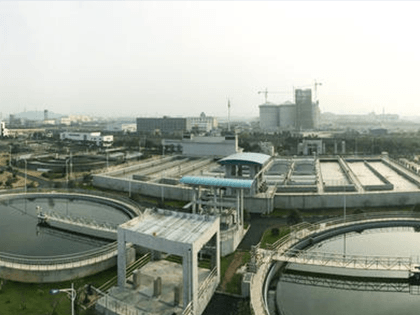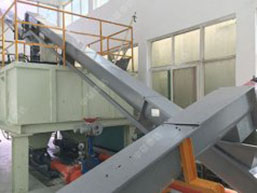With the development of the economy and urbanization, amount of urban water and sewage discharge are increasing, which results in a sharp increase of municipal sludge amount. It is estimated that the annual output of municipal sludge in our country will exceed 60 million tons by the end of 2020. According to the "Thirteenth Five-Year Plan for Ecological Environment Protection", by the end of 2020, harmless disposal rate of urban sludge at prefecture level and above must reach at least 90%. Municipal sludge is a kind of misplaced resource rich in organic matter, nutrient elements and NPK. Without proper disposal, municipal sludge will cause pollution to air, water, and soil. According to the disposal goal of "reduction, stabilization, harmlessness and resource utilization", common disposal methods include landfill, incineration, agricultural use, construction and engineering products. Dewatering is a restrictive link in sludge disposal at present stage. Water content of municipal sludge generally exceeds 90%. Before harmless and recycling process, water content of sludge must be reduced to less than 60%. While making bricks or other construction and engineering materials by sludge, moisture content needs to be reduced to lower than 40%. While making fertilizer from sludge or incineration for power generation, moisture content needs to be reduced to less than 30%. High water content and strong fluidity of high-yield municipal sludge cause huge economic and environmental burden in its transportation and disposal circle.
Therefore, quantity reduction through drying is a key link in municipal sludge treatment technology. After drying, volume and quantity of sludge can be reduced so that to provide convenience for subsequent treatment. However, municipal sludge is rich in hydrophilic substances, such as polyacrylamide and polyaluminum chloride. Hindered by the electrostatic repulsion generated by the negative charge on the surface of the sludge particles, sludge is in large amount and bulky and difficult to dehydrate. Traditional sludge dewatering ways mainly use physical and chemical methods, which can only remove 20% to 25% of free water. Additives will leave metal ions and toxic organic compounds, which will cause secondary pollution. In response to this situation, Zonelion TAEDA has proposed a variety of thermal drying technologies to meet the needs of municipal sludge drying in different regions. If you need deep recycling technical solutions, you can also contact us for entire processing technology and equipment manufacturing support services.
In terms of municipal sludge quantity reduction by drying, Zonelion TAEDA® recommends following drying technologies and equipment that have been optimized for many years and are greatly praised: low temperature belt drying system, waste heat low temperature drum drying system, steam rotary drum drying system, rotary drum sludge drying system and air swept rotary wing drying system. You can click on the "Recommended Process" below for details of above dryer and corresponding technology. You can also call us directly for quotation and technical support.
(1)、Can choose closed circulating drying mode to save running cost, avoid exhaust gas/heat emission and reach environmental protection aim. Can also choose low-cost open type drying mode.
(2)、Adopt patent technology which expands application range of dryer in relevant fields. Compared with common dryer, its energy consumption is 30% less, which greatly helps reducing running cost.
(3)、Germ kill rate is high after drying; Conform to requirements of environmental protection and hygiene. Odor can be treated by the deodorizing unit to reduce odor pollution.
(4)、Microcomputer fully automatic control mode, stable performance and convenient operation; Adopt programmable control mode, can set different drying curves to meet different drying modes of different materials. ;
(5)、Adopt first-line brand auxiliary machines to fully guarantee performance of entire unit and equipment;
(6)、Set up multiple safety protection functions such as phase sequence protection, phase loss protection, overload protection, high voltage protection and low voltage protection.
(7)、Appearance design is beautiful and whole unit occupies small area.
-
 Low-temp Belt Drying System
Low-temp Belt Drying System
-
 Exhaust Heat Drum Drying
Exhaust Heat Drum Drying
-
 Steam Rotary Drying System
Steam Rotary Drying System
-
 Rotary Drum Drying System
Rotary Drum Drying System
-
 Air Swept Drying System
Air Swept Drying System
| Model | Working principle | Working temperature | Heat source | Occupation area | Brand | Capacity |
| ℃ | t/h |
| MED | Hot air rotary drum dryer | 200-750 | electricity, gas, oil, coal and biomass pellets | Middle | Taeda | 0.5-50 |
| WWD | Circulation hot air mesh belt dryer | 60-300 | electricity, gas, heat conduction oil, hot water,exhaust gas, heat | Large | Zonelion | 0.05-5 |
| OSC | Airflow fluid bed dryer | 120-750 | electricity, gas, oil, coal and biomass pellets | Very small | 中联泰达 | 0.1-10 |
| GD | Steam tube rotar drum dryer | 100-170 | steam, heat conduction oil, hot water | Relatively large | Taeda | 0.1-8 |
| WRC | Low temperature large air volume rotary drum dryer | 45-750 | flue gas, exhaust gas, steam heat exchanging | Relatively large | Zonelion | 0.1-20
|
 中文
中文 English
English Home
Home













